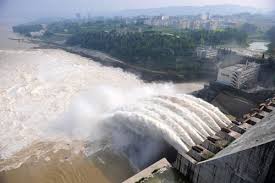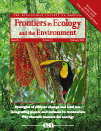New science helps put spotlight on unseen global impacts
Add Summary

As the world grows more connected, “out of sight, out of mind” looms as a perilous consequence of globalization. A sustainability scholar presents an integrated way to track the many footprints that are made in global transactions in the journal Frontiers in Ecology and the Environment this month.
Jianguo “Jack” Liu, the Rachel Carson Chair in Sustainability at Michigan State University, has been putting the award-winning telecoupling framework to the test to examine the often unseen and unaccounted for consequences, good and bad, that come with distant human-nature interactions. The telecoupling concept, introduced by Liu in 2008, allows scientists from many disciplines to examine how distant environmental and socioeconomic actions lead to reactions and feedbacks – and then to more repercussions that reverberate globally.
He says that the level of global connectivity – brought by increased travel, lightening-fast communication via the internet and cell phones, vast exchanges of goods and services, and many human activities – has come with certain myopic perception of what it all means.
“More than ever in our world, supply and production is separate – often by thousands of miles – from the places that demand and consume resources,” said Liu, director of MSU’s Center for Systems Integration and Sustainability.
In the paper “Framing Ecosystem Services in the Telecoupled Anthropocene,” Liu and his colleagues apply the telecoupling framework to ecosystem services. Ecosystem services – the benefits that ecosystems provide to humans, such as clean water and food – are unevenly distributed across the world. Human demands for distant ecosystem services have increased drastically. 
The authors give a detailed example of how expansively China’s South-to-North Water Transfer Project reaches into all aspects of life not only in China but also in many other parts of the world.
The sheer magnitude of the world’s largest and longest interbasin water transfer is overwhelming. The full project brings 11.8 trillion gallons from the Yangtze River in southern China to water-stressed regions in the north by 2020 at projected cost of some $80 billion. The telecoupling framework shows even complex events that span great distances and time can be systemically analyzed to understand what they truly mean to the world.
“The telecoupling framework helps scientists untangle complexity, which in turn will help people better understand the world around them and make better decisions,” Liu said.
In the paper, authors – Liu, Wu Yang and Shuxin Li, note the water transfer project causes both positive and negative environmental and socioeconomic effects – climate, ecological patterns and processes, hydrological cycles, and socioeconomic conditions. Moreover, it alters water availability distribution, soil moisture, water and energy balance between the land surface and the atmosphere, livelihoods of resettled people, and communities receiving resettled people. The project literally and figuratively will flood the world with change – and the telecoupling framework helps navigating the expansive change systemically for more effective policy and management.
The work was supported by the National Science Foundation, Michigan State University, and Michigan AgBioResearch.



 Print
Print Email
Email

